Table of Contents:
openSUSE 15.2
-
Available software
-
Creativity & Inventing
-
Daily Use Purposes
-
Stability & Bugs
-
Customizability
Summary
openSUSE 15.2 is an excellent Linux distribution for power users who want to enjoy the ability of fully controlling their systems using a complete tool like YaST2. Combining that with the other features of openSUSE (OBS, Kiwi, openQA, Btrfs & Snapper…), it becomes a good investment for the long run to learn and use.
There are many common aspects between openSUSE as a Linux distribution, and Mercedes-Benz, as a German car manufacturer. If they were to be summarized in one word, it would be: Quality.
openSUSE is a very elegant Linux distribution which was started back in 2006. The distribution did very well in providing its users with the software, features and comfort they need to use it as their daily driver, both for desktop and server uses. However, it is rare today to see anyone speaking in the open source press about openSUSE; Everyone knows the distribution and its features, but no one goes further in spreading the word about it or using it more commonly.
It is more weird if you know that these features are quite interesting and rare to see in the Linux world:
- Did you know that you can create your own Linux distribution locally based on openSUSE using the Kiwi tool from command line?
- Don’t like command line? The online openSUSE Build Service (OBS) can create images for you from inside your web browser!
- OBS can also be used to host software repositories for openSUSE and even the other Linux distributions (Ubuntu, Fedora.. etc).
- YaST2 is another love story; More than 80 different graphical system modules that can be used to tweak various aspects in your system. Think of them like 80 programs located in one central management software. These modules can be used to provide features like remote system installation, remote system management, auto-installation, hardware drivers management and much more.
- Full Btrfs support. openSUSE is probably the best distribution that supports this filesystem by default. And it is fully integrated with it to the level that if you for example break your system after an update, then you can rollback to an older system snapshot instantly from the GRUB2 boot menu in 10 seconds. You can even rollback to whatever version you want of any modified file on your system.
- It has its own package manager, Zypper, which is – subjectively speaking – faster in our tests than apt and DNF in doing package management tasks. Let alone that its command line user interface is way more organized and comfortable to work with.
- And to make sure everything is in the desired quality, they have their own QA (Quality assurance) online testing service called openQA, which tests their default ISO images for any bugs or issues before releasing them, automatically without human interaction.
You can read more about openSUSE features in details.
Version 15.2 of the distribution was released few weeks ago. And as usual, we’ve put our hands on it and tried it to see what’s new and what a user can expect of it. This is a full review of openSUSE 15.2.
openSUSE 15.2 Review
Overall System
The openSUSE DVD comes with a large collection of software packages, which include the GNOME, KDE, Xfce, MATE desktops and much more. The installer will allow you to select the desktop environment you want during the installation, beside any other packages you may desire.
The default GNOME option will install the following sessions for you:
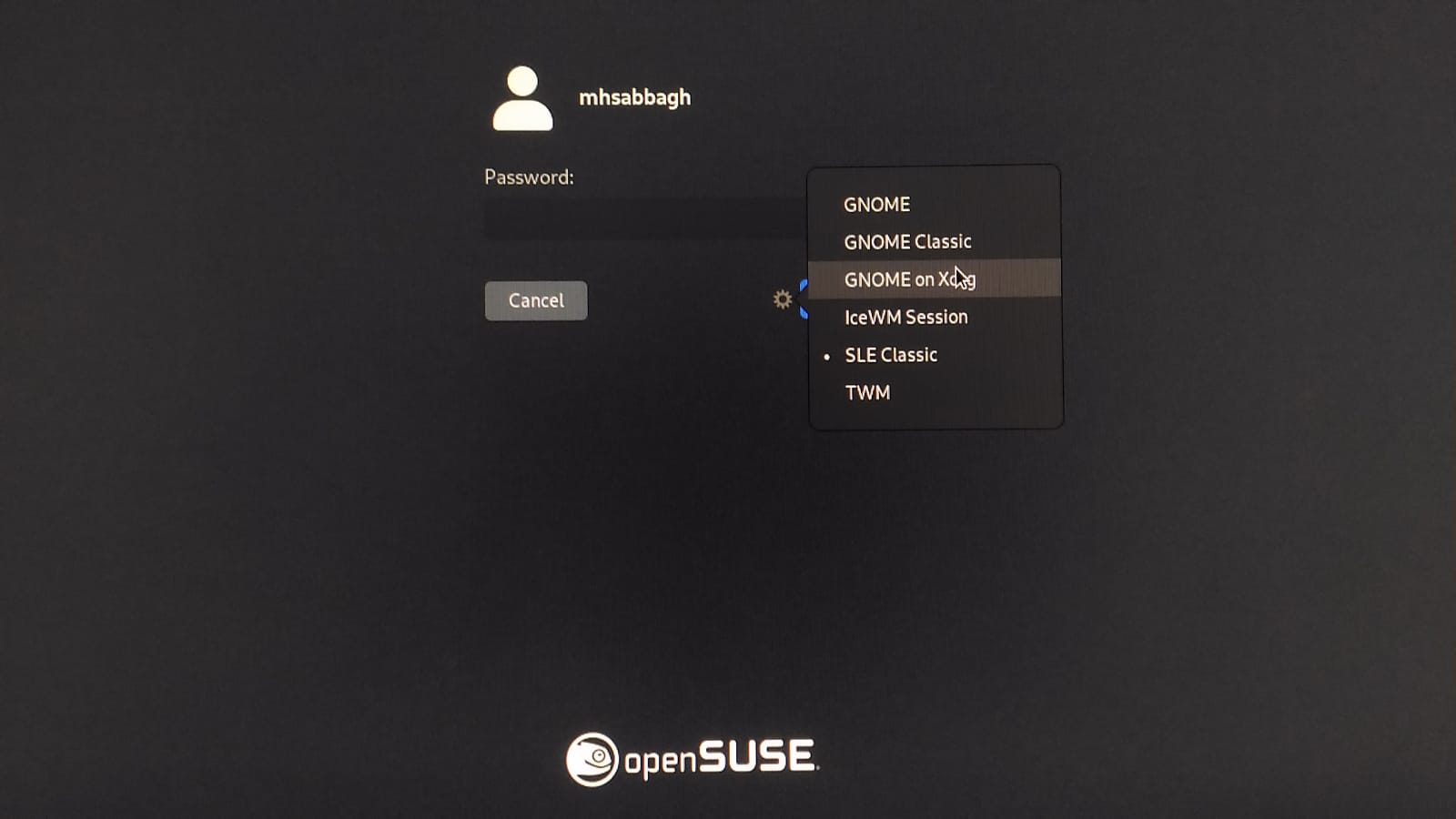
The GNOME Classic and SLE Classic sessions are basically the same GNOME Shell session, but with extensions enabled to make it look like the good old GNOME 2.x:
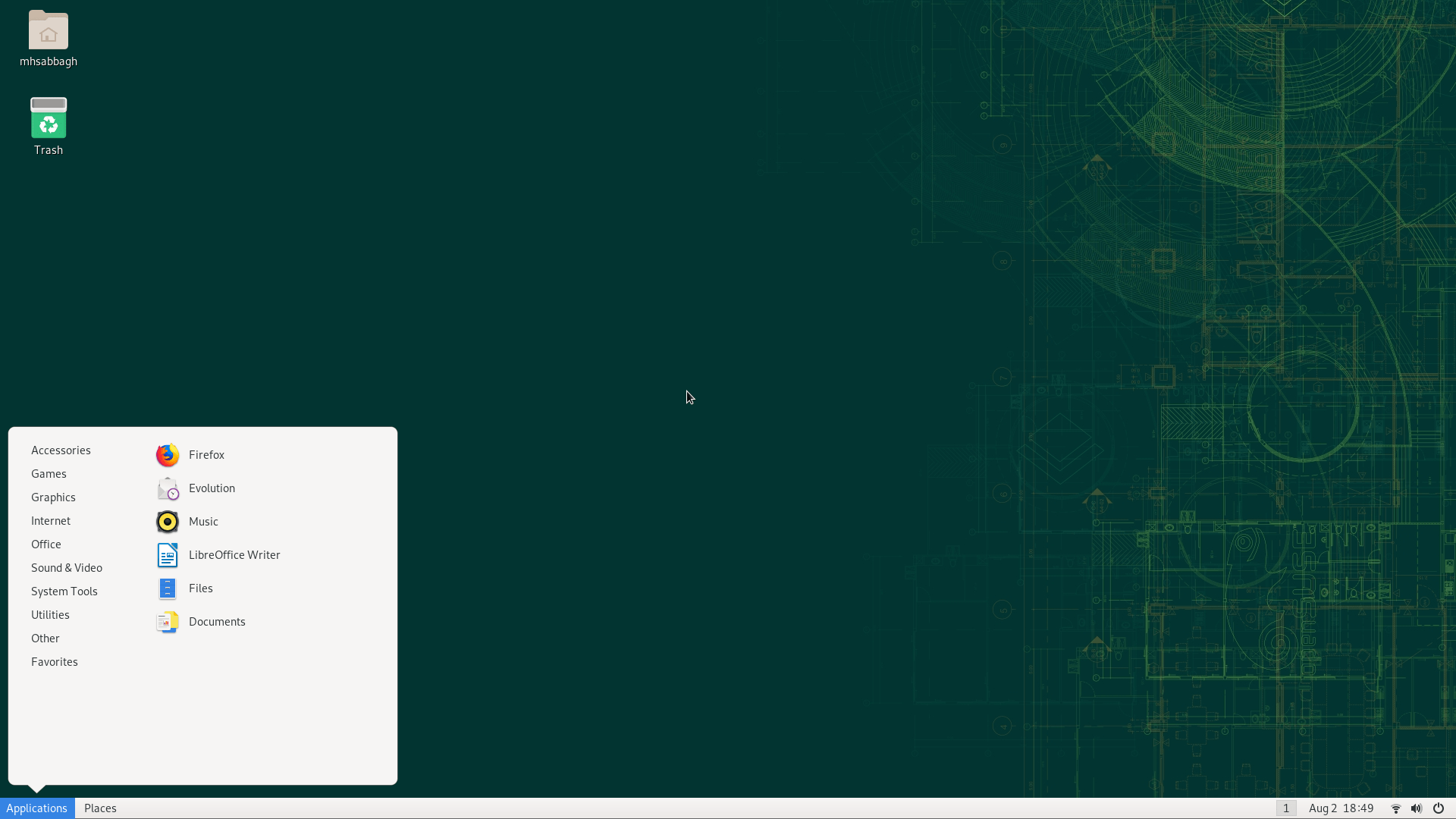
TWM and IceWM are additional window managers installed in case you shall ever fail in using the GNOME sessions installed, for whatever reason.
The GNOME desktop is a simple, empty one in openSUSE 15.2:

The DVD is bloated with software and utilities:
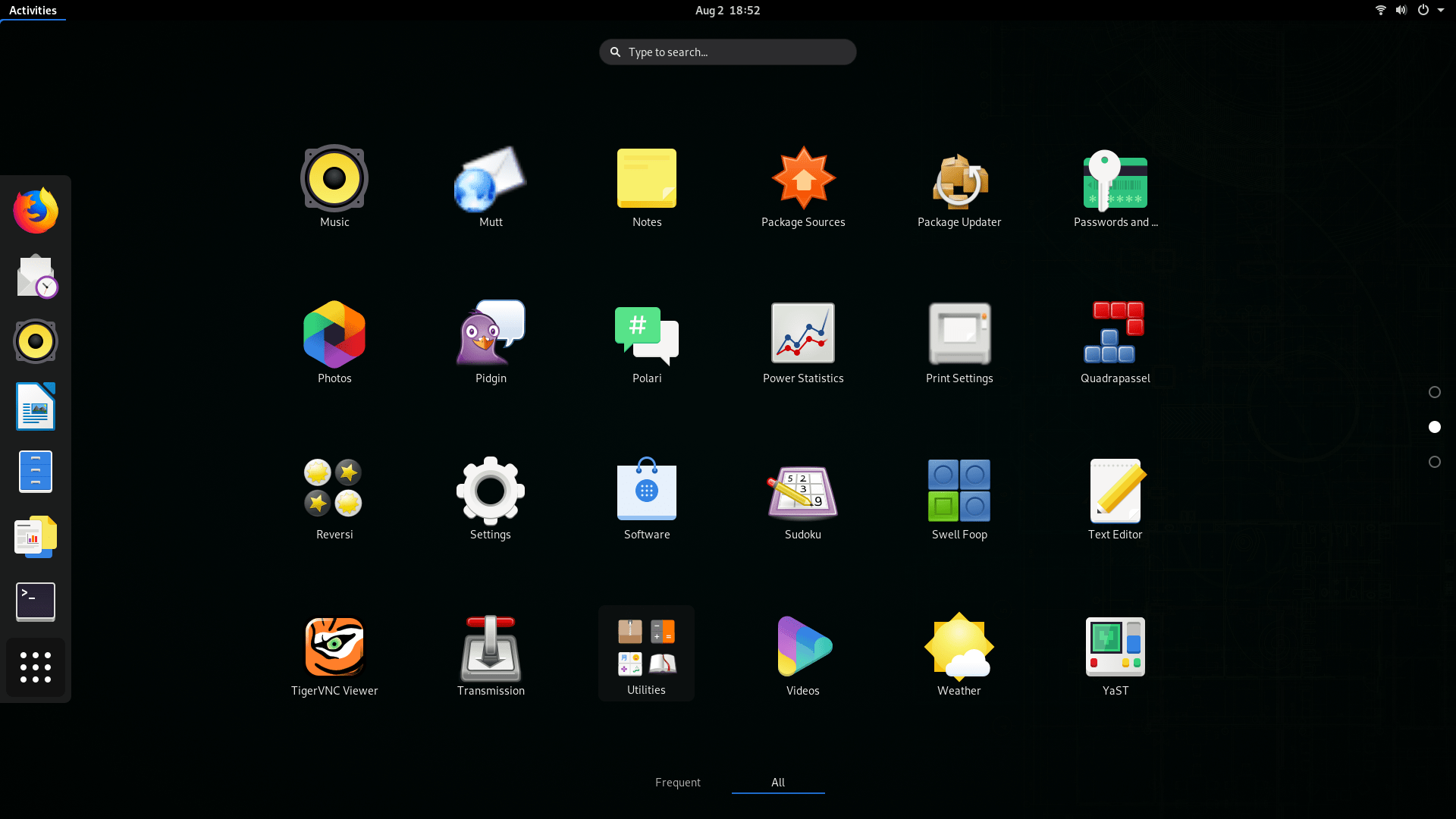
GNOME 3.34.1 is the installed version:
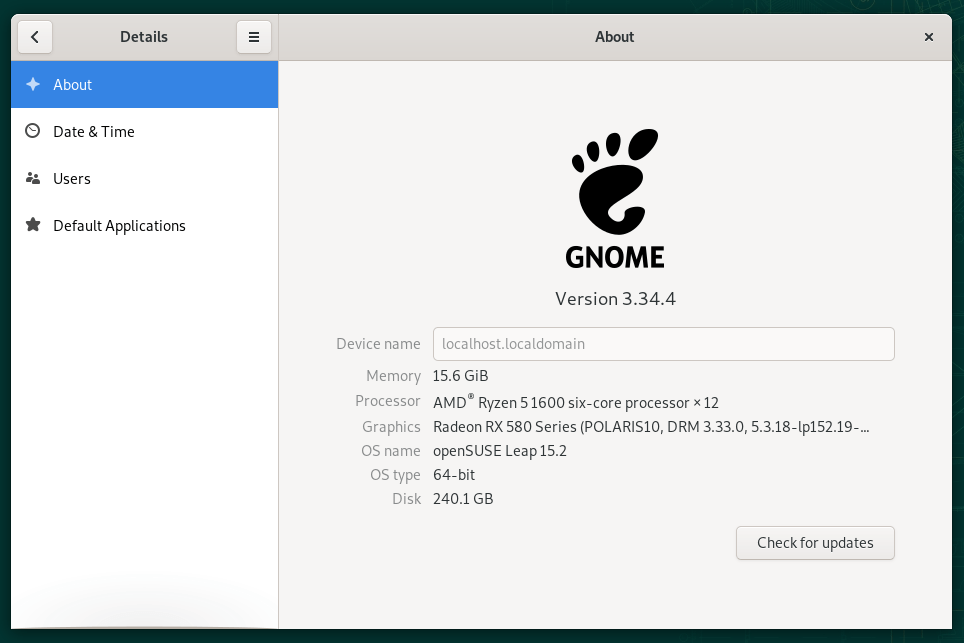
In openSUSE 15.2, there’s a new start page specialized for openSUSE with a nice overall look and feel. You can use it to search for Internet search results, wiki pages, software packages and forum posts too:
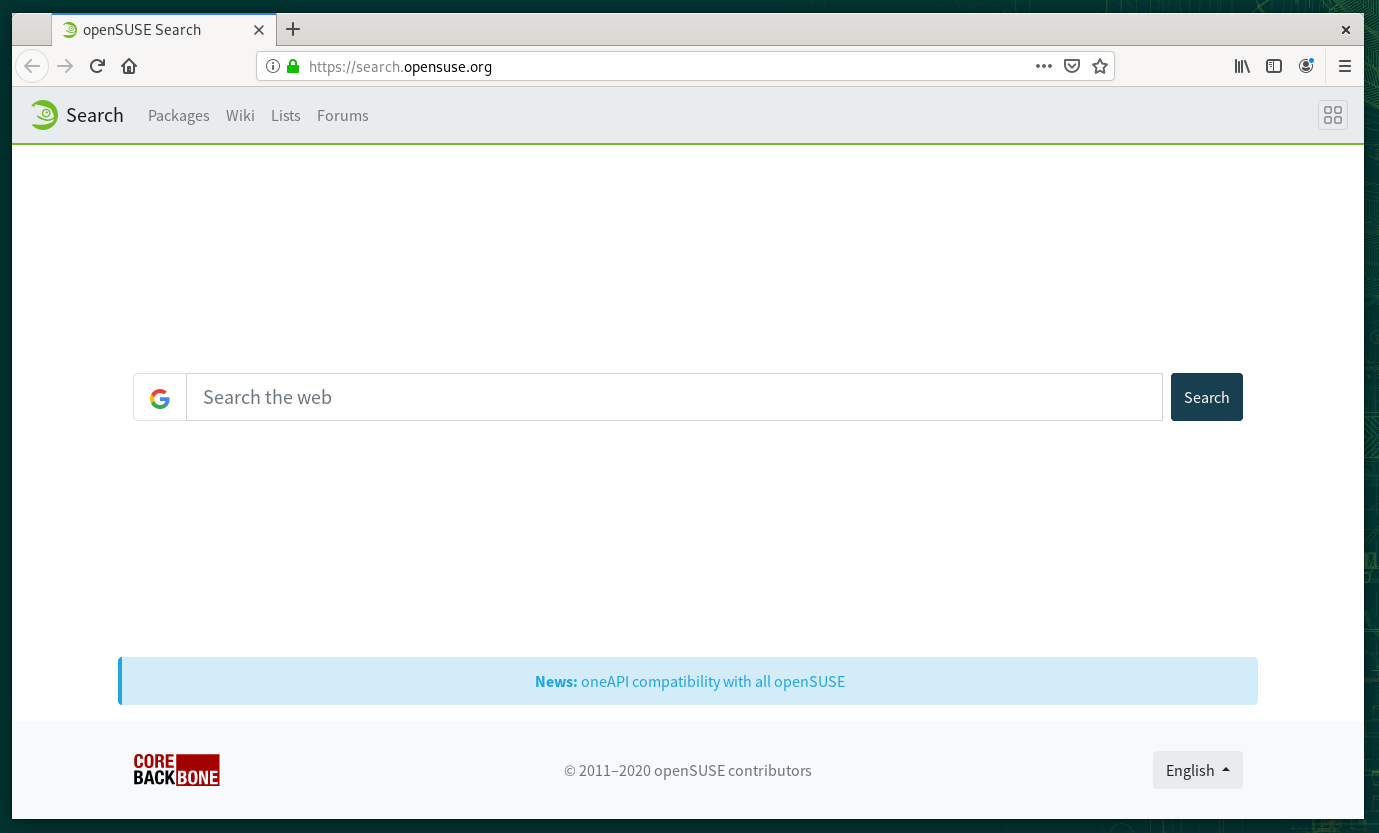
YaST2
No review for openSUSE is complete without reviewing YaST2.
The overall user interface for YaST2 is still the same as ever; A central launcher to start the modules you would like use:
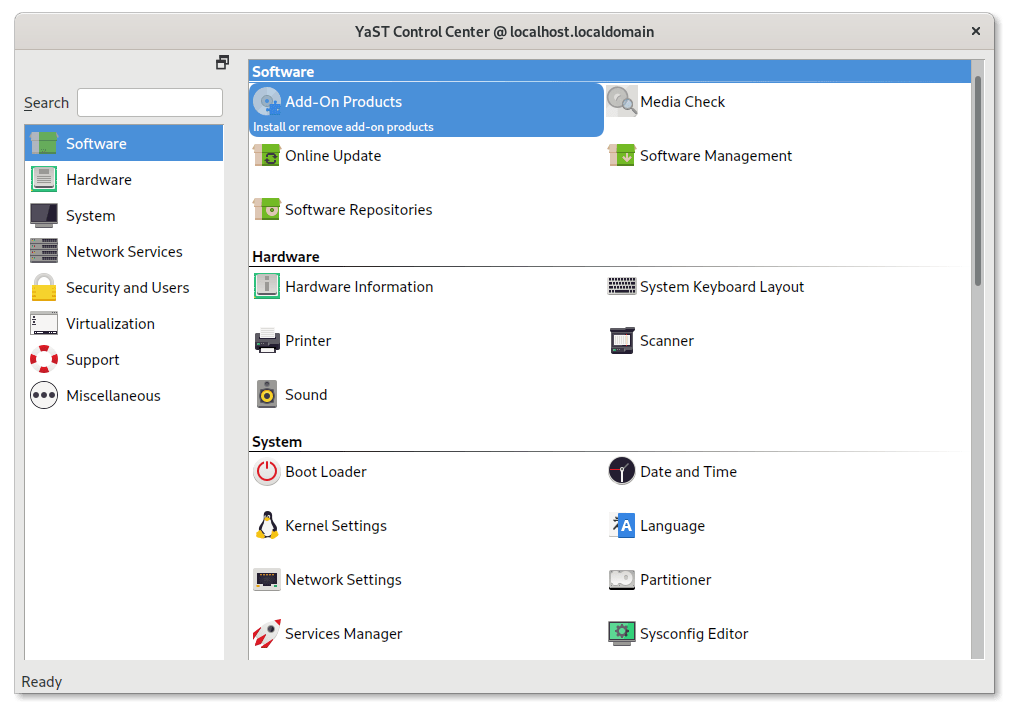
There are so many YaST2 modules available for literally everything. And notice that these ones are not all of them; Instead, they are just the ones installed by default. We’ll take a quick look on some of them.
The services modules is a graphical frontend for systemd services, where you can enable/disable any service file you want or modify its settings. You can also modify services’ working level in the system:
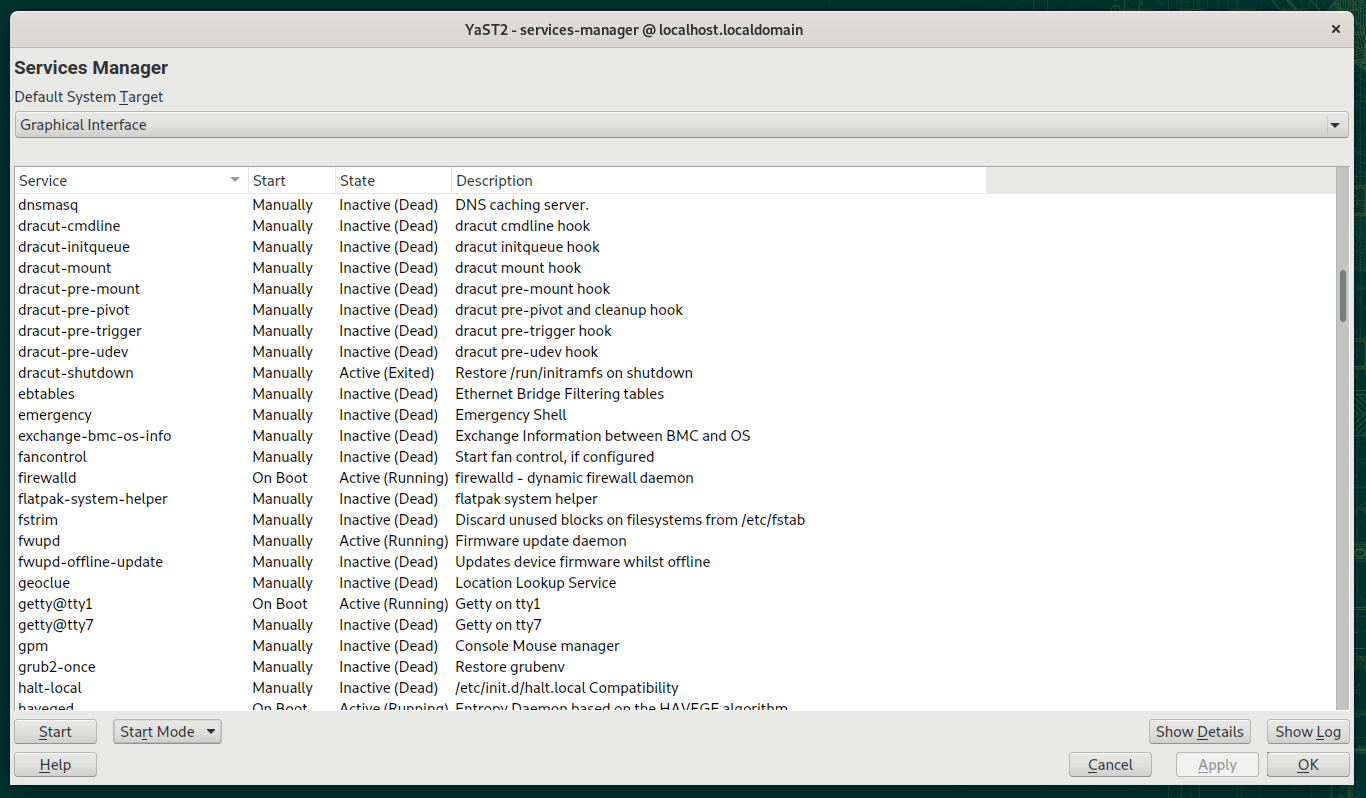
Sysconfig editor is a straightforward module for editing importing system settings in a text-like interface. You can think of it like Windows Registry editor:

Some advanced options for managing users are available:
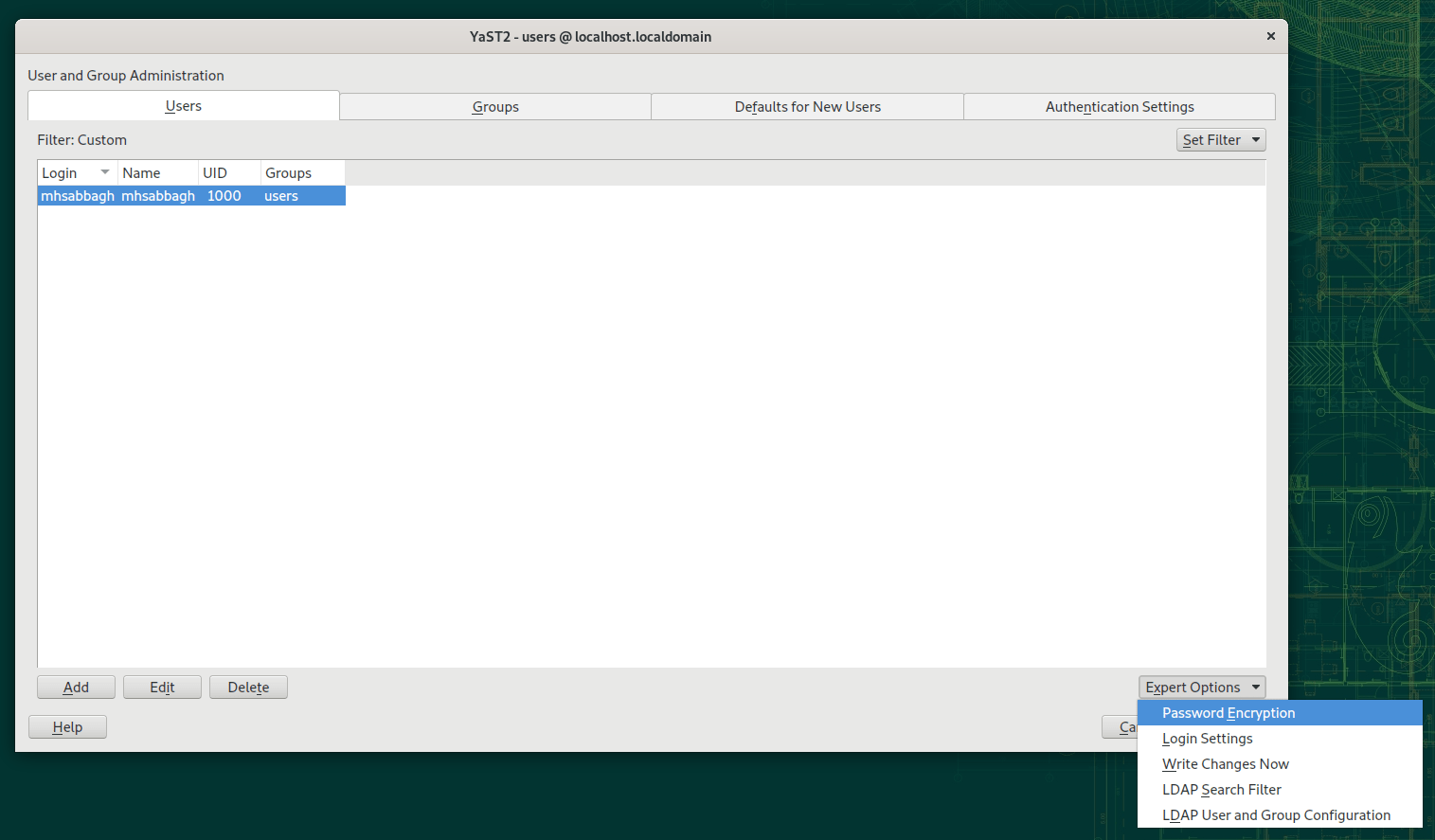
There’s also a module for managing hard drives. It is well-programmed to the level of being a full alternative – and much more – for GParted. You can manage RAID volumes, Bcache/Btrfs volumes and modify any drive on your PC. It even has the ability of connecting to remote hard drives and doing the same operations on them (If you added remote hard drives to your system):
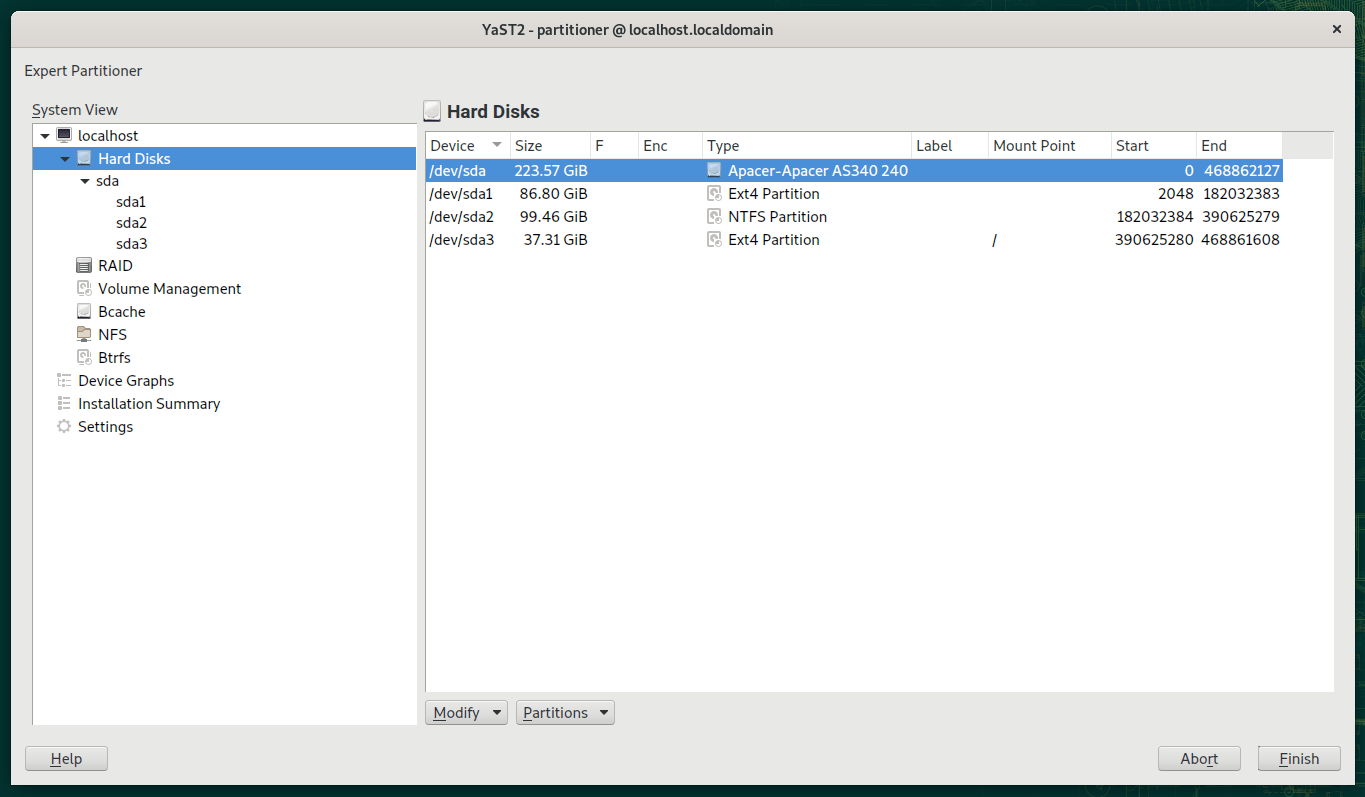
Software Management
YaST2 has a fully-fledged software management program that is unmatched in any other Linux distribution at all.
A sub-window exists for managing your system repositories:
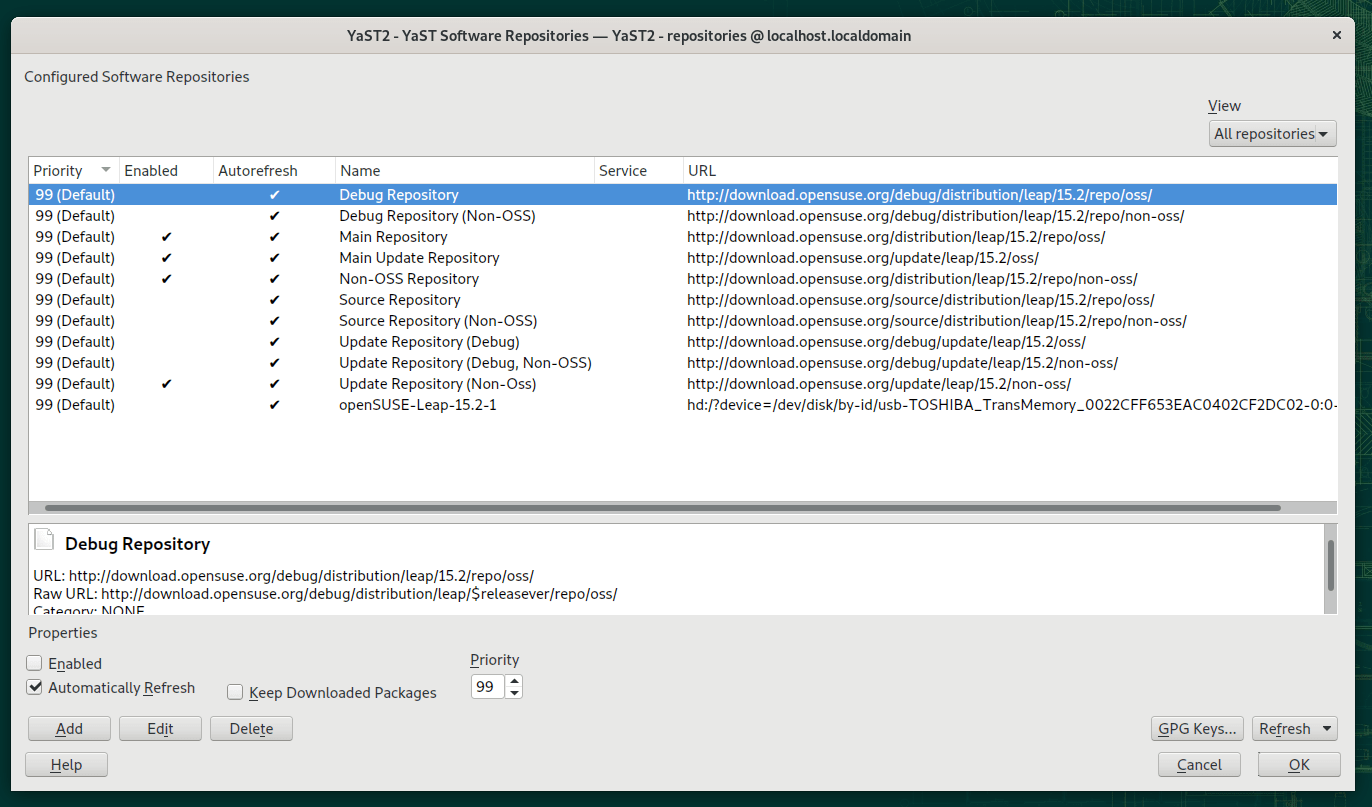
If you click on the add button, you’ll see a list of possible sources to add additional package repositories to your system. A set of ready community-provided is available for you to choose and add instantly:
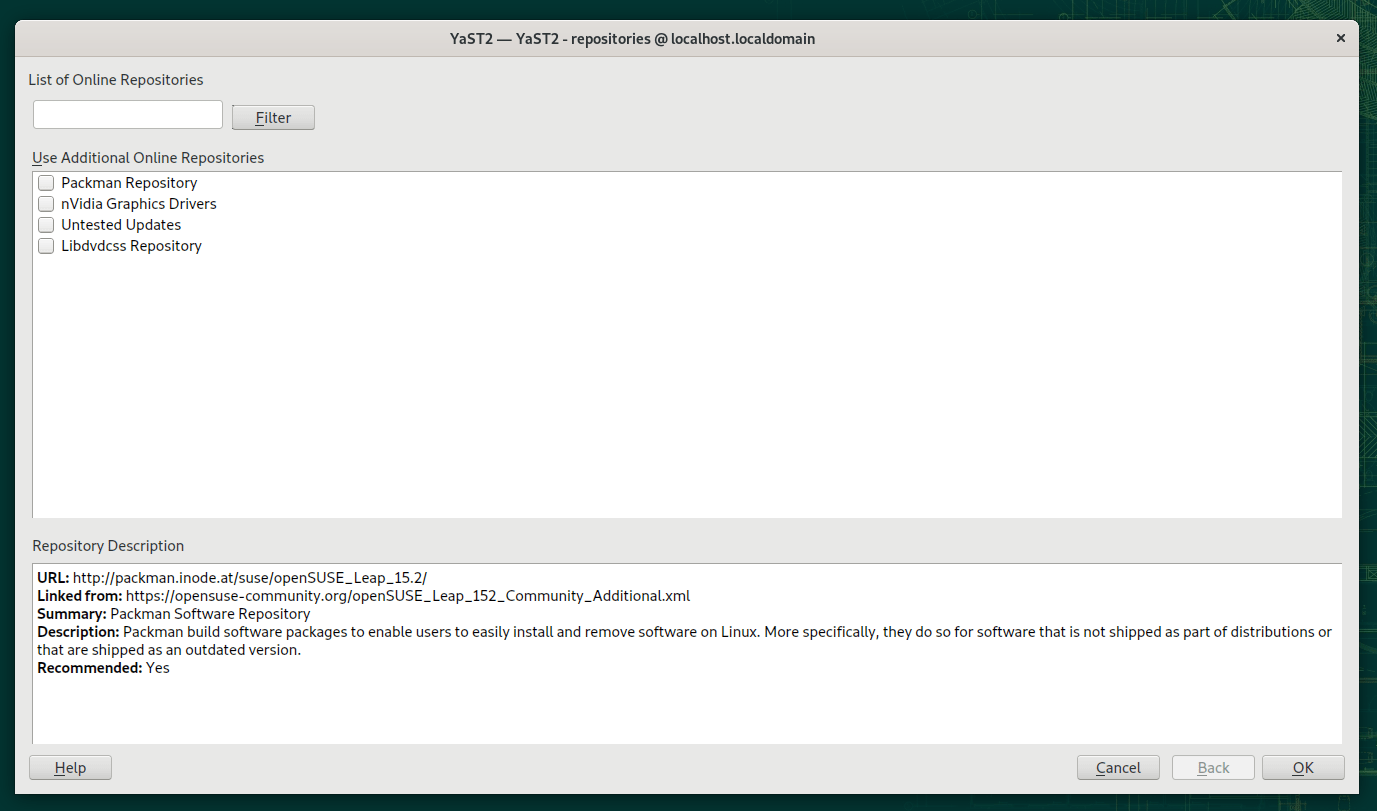
It would ask you to verify the GPG key during the addition of the repository:

And then, you can browse all packages in that repository from the software management module:
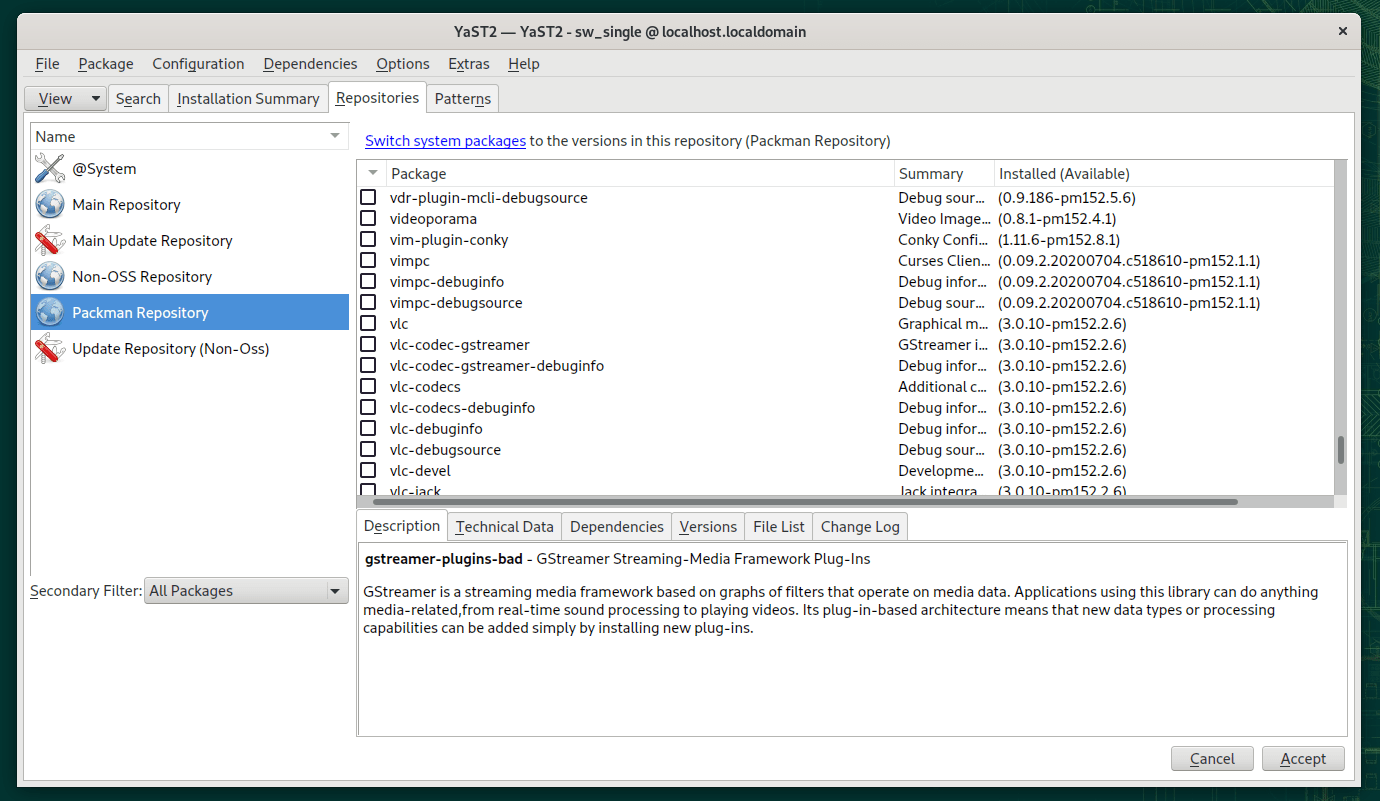
You can even browse them by pattern, so that you can install a whole subset of packages in just one click, such as MATE packages or KDE packages, and much more than that:
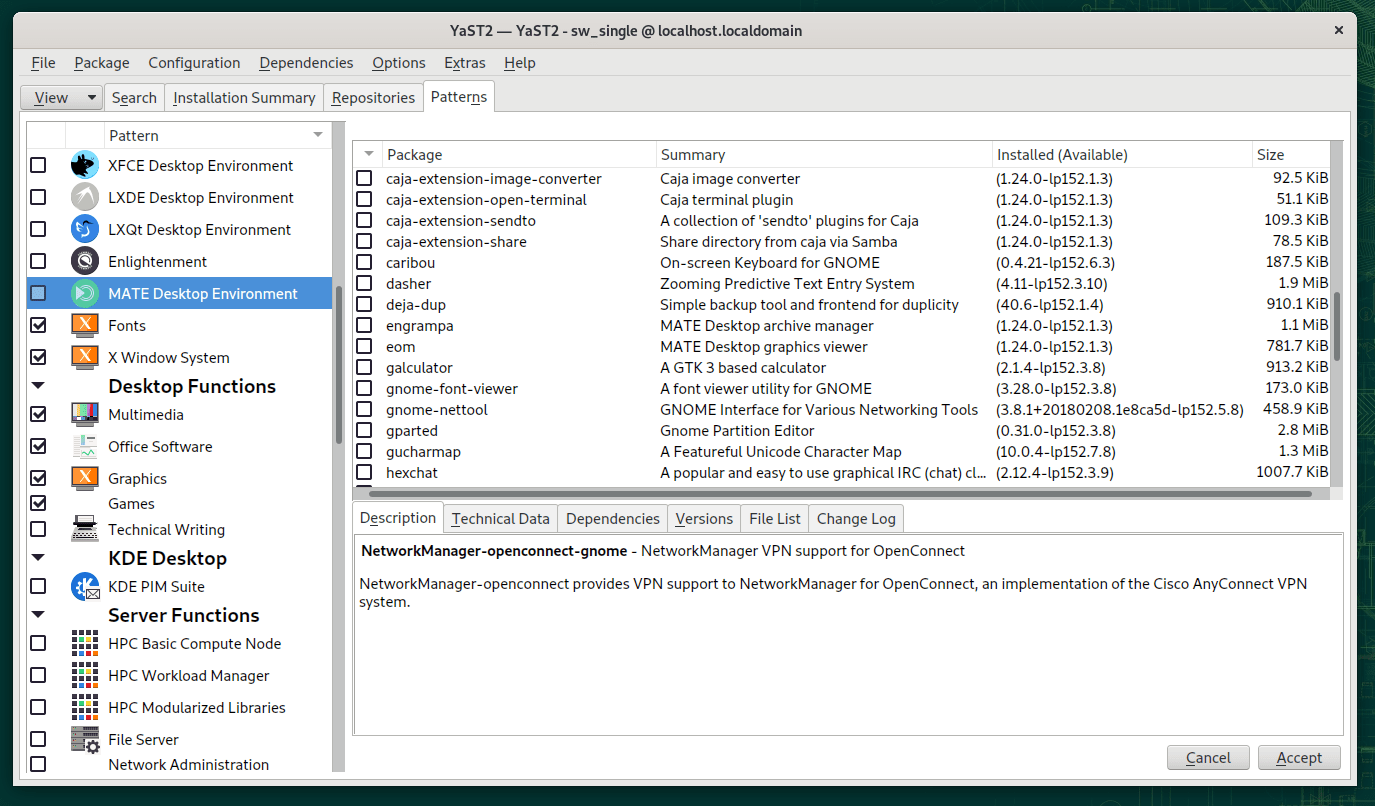
It is also interesting to know that supplementary languages packages are also available in different sets. So this allows you for example to install all the packages which support the French language on your system:
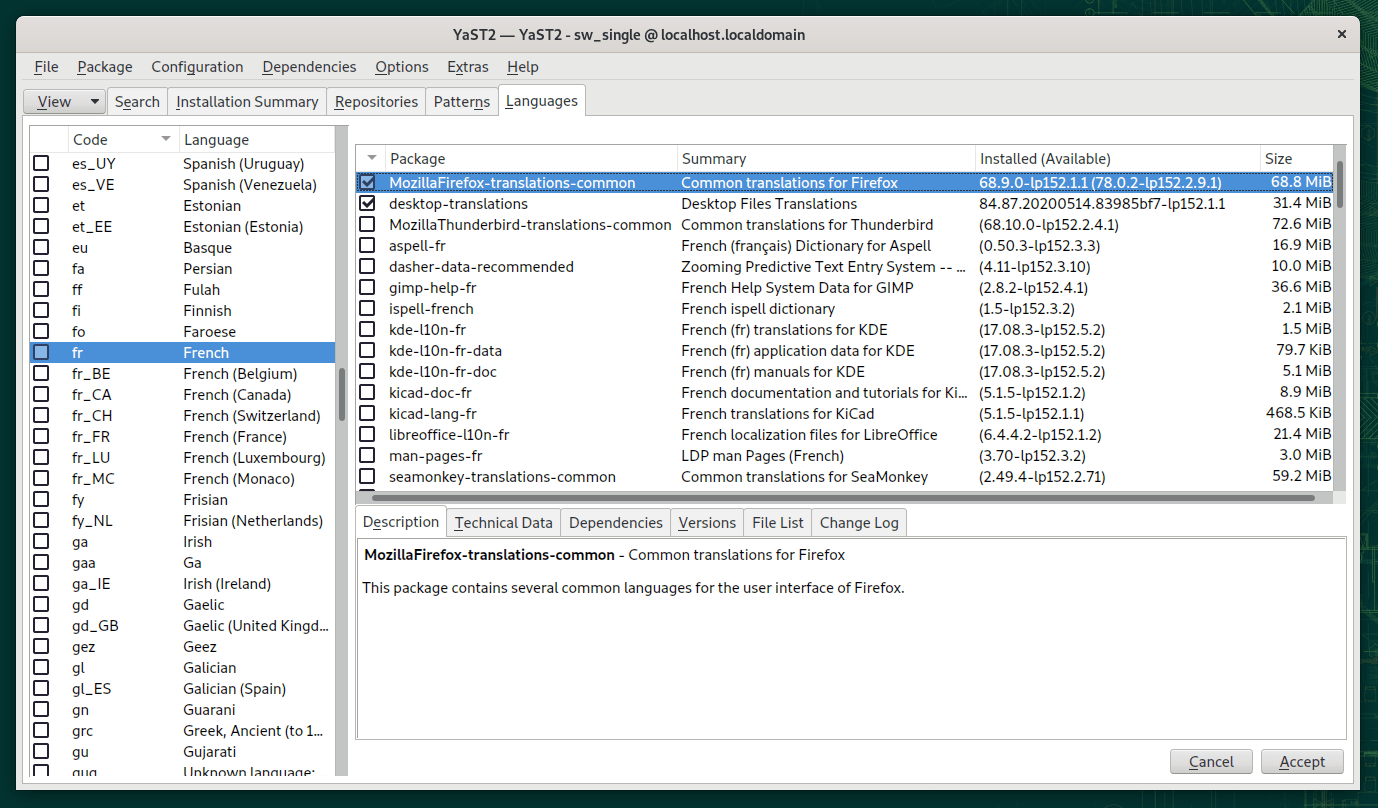
Another interesting feature about openSUSE is that all of its repositories hosted on the openSUSE Build Service (OBS) are available for users to search and browse from the Internet in one place. This allows you to search for any additional packages that you want to use and that are not in the official repositories, and also install them using the 1-click YaST2 installer:
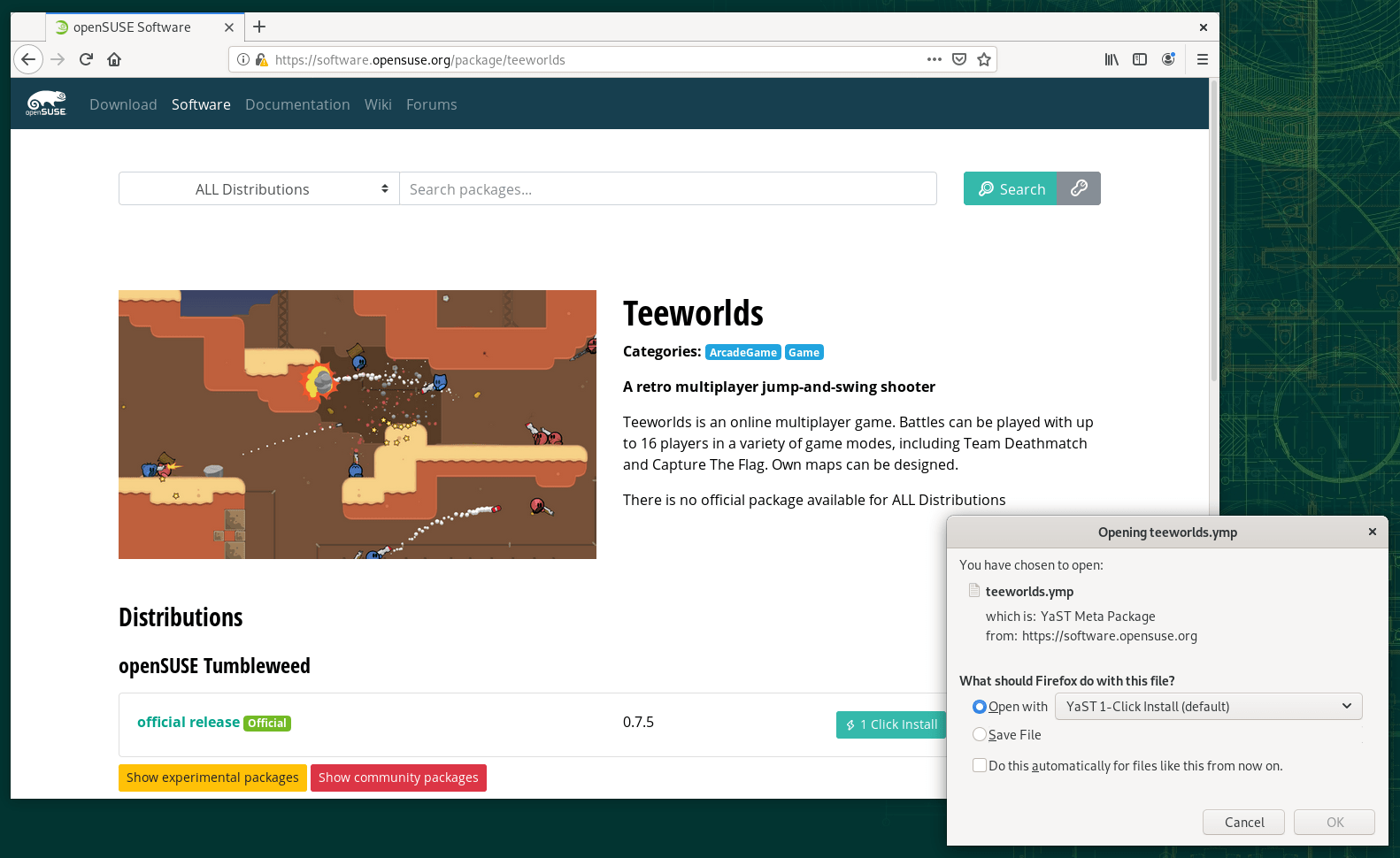
It will ask you to add the repository (if not added to your system already) of that package:

And then, the installation will proceed automatically!
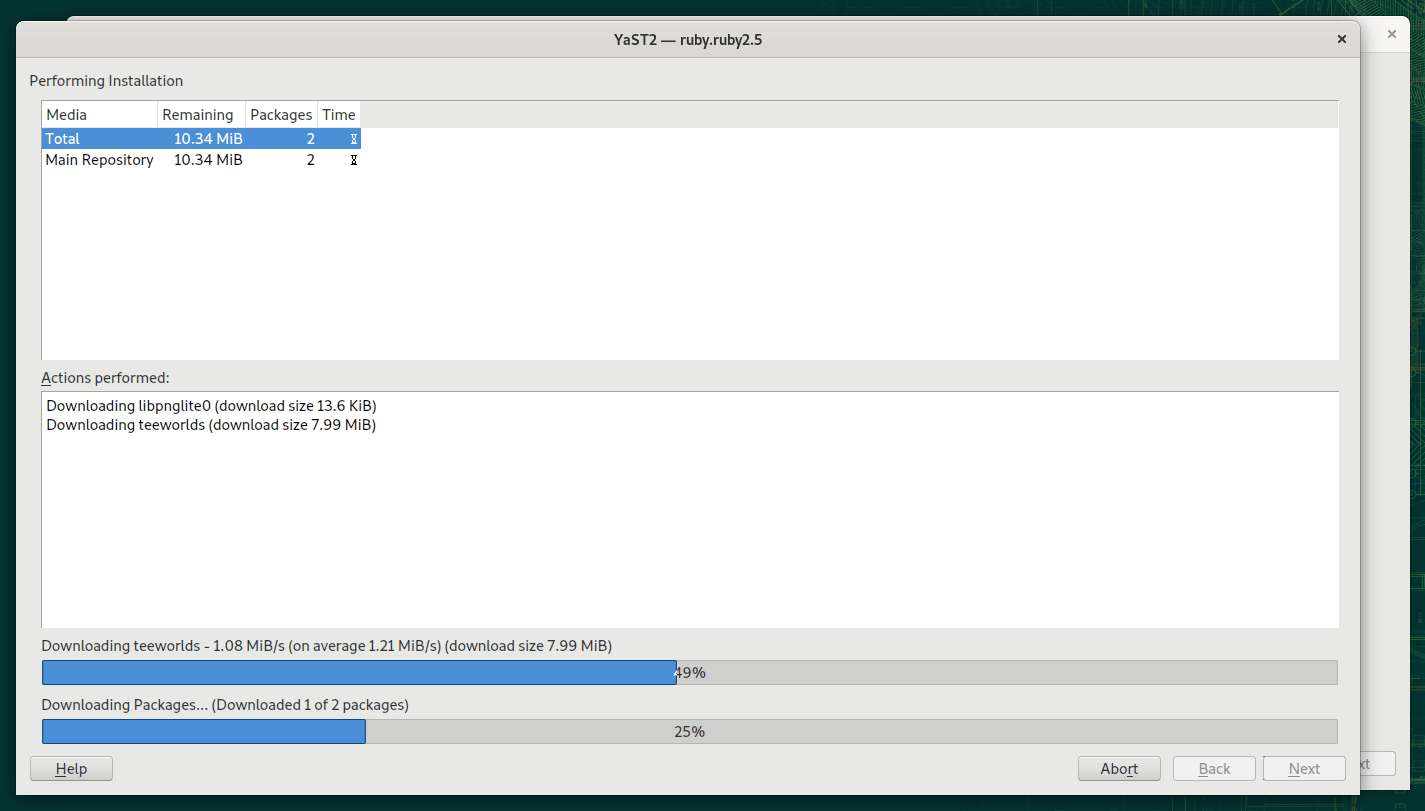
Users who do not like the software management module in YaST2 can use GNOME Software instead, which is installed by default too in openSUSE 15.2:
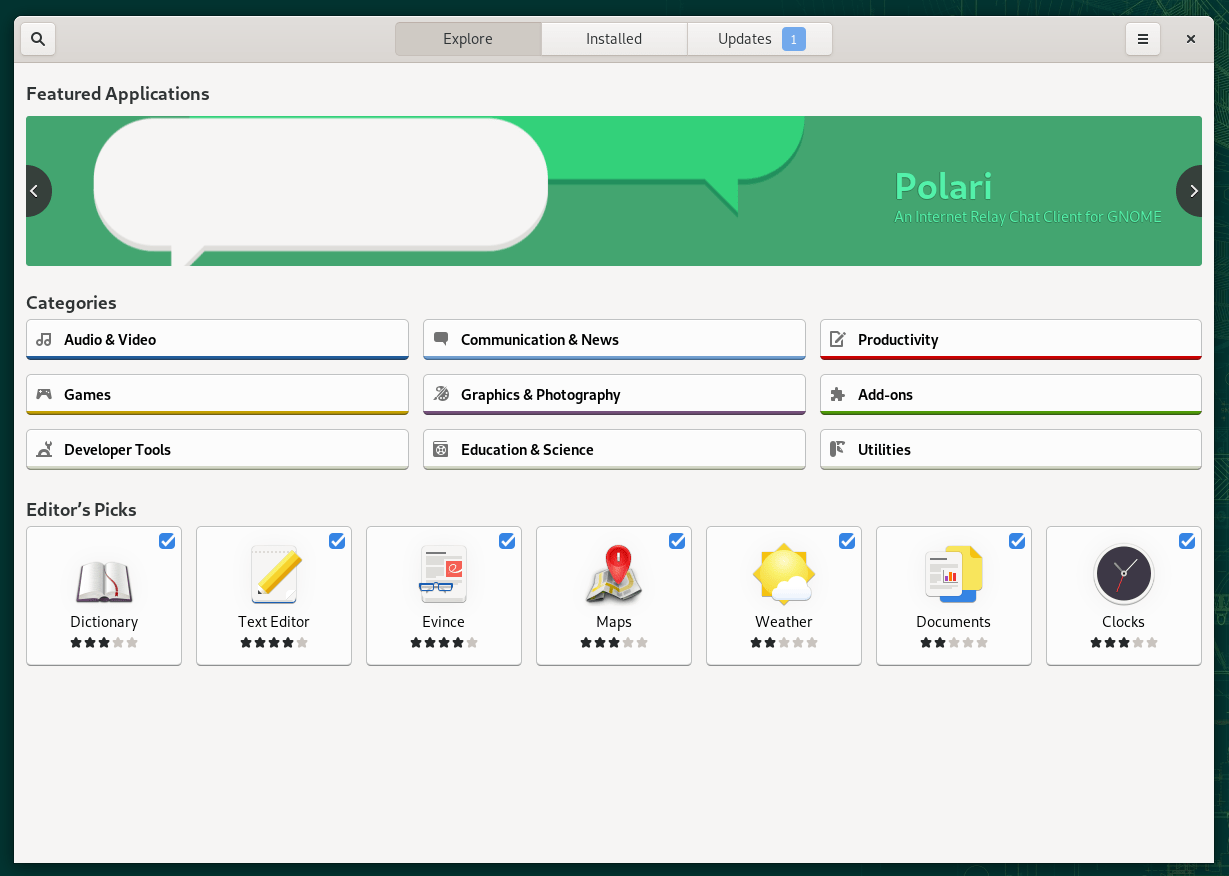
Alternatively, Zypper package manager is available too to do all your tasks from command line in a beautiful organized manner:

Miscellaneous
One can notice that the sound amplification over %100 option is available to be activated in GNOME Tweaks. This patch is originally coming from Ubuntu – if I am not mistaken – and is not available in the upstream vanilla GNOME. But the openSUSE folks added it to their distribution:

It is worthy to note that they have their own LibreOffice startup theme too:
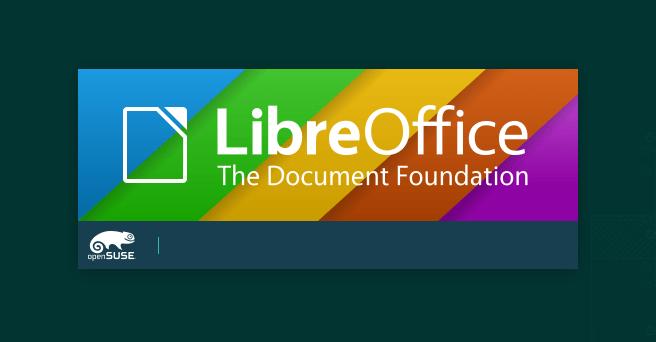
It was also interesting to know that openSUSE supports the DNF package manager too; which is the default Fedora package manager. Yes, you can use DNF to manage packages on openSUSE, just as if you were doing it on Fedora, but it needs to be configured in its configuration files with openSUSE repositories before using it. After that, it should work:
mhsabbagh@localhost:~> dnf --version 4.2.19 Installed: dnf-0:4.2.19-lp152.1.1.noarch at Sun 02 Aug 2020 04:32:28 PM GMT Built : https://bugs.opensuse.org at Sun 01 Mar 2020 12:55:12 PM GMT Installed: rpm-0:4.14.1-lp152.17.5.x86_64 at Sat 18 Jul 2020 08:41:00 PM GMT Built : https://bugs.opensuse.org at Mon 08 Jun 2020 08:13:44 PM GMT mhsabbagh@localhost:~> dnf update Error: There are no enabled repositories in "/etc/dnf/repos.d", "/etc/yum.repos.d", "/etc/yum/repos.d", "/etc/distro.repos.d".
openSUSE 15.2 saw the addition/updating of a number of specialized packages into its database. For machine learning, TensorFlow, PyTorch, ONNX, Grafana and Prometheus are available now in the official repositories. openSUSE 15.2 also provides an up-to-date version of GNU Health in its repositories for anyone working in the medical sector.
Performance
openSUSE 15.2 GNOME uses around 760MB of RAM:
mhsabbagh@localhost:~> free -m
total used free shared buff/cache available
Mem: 15929 765 14651 18 512 14877
Swap: 0 0 0
And boots in 10 seconds:
mhsabbagh@localhost:~> systemd-analyze Startup finished in 3.176s (kernel) + 850ms (initrd) + 6.474s (userspace) = 10.501s
This review was done on the following hardware:
- CPU: AMD Ryzen 1600, 6 cores and 12 threads.
- GPU: Asrock AMD RX 580, 4GB of VRAM dual-channel.
- RAM: 16GB OF DDR4 RAM, 3000MhZ.
- Motherboard: ASUS Dragon B450M.
- SSD: Apacer Panther AS340 240GB SSD.
The Bottom Line
Overall, the openSUSE 15.2 distribution is a good release, as it ever was. We recommend upgrading to the new version or installing it on a fresh hardware if you are willing to transfer to the openSUSE world.
One can also give a word about how awesome the available documentation for openSUSE is; You can search in their wiki, for any information you desire and you’ll probably find it in no time.
You can download openSUSE from its official website.
We’ll soon update our things to do after installing openSUSE guide to make it compatible with openSUSE 15.2.
openSUSE 15.2
-
Available software
-
Creativity & Inventing
-
Daily Use Purposes
-
Stability & Bugs
-
Customizability
Summary
openSUSE 15.2 is an excellent Linux distribution for power users who want to enjoy the ability of fully controlling their systems using a complete tool like YaST2. Combining that with the other features of openSUSE (OBS, Kiwi, openQA, Btrfs & Snapper…), it becomes a good investment for the long run to learn and use.
Hanny is a computer science & engineering graduate with a master degree, and an open source software developer. He has created a lot of open source programs over the years, and maintains separate online platforms for promoting open source in his local communities.
Hanny is the founder of FOSS Post.



